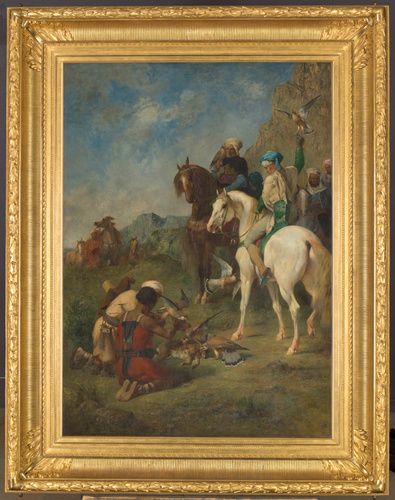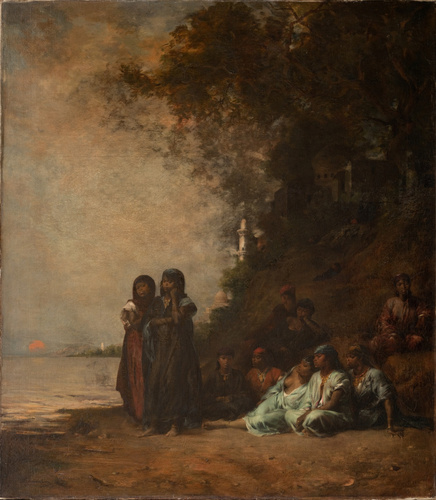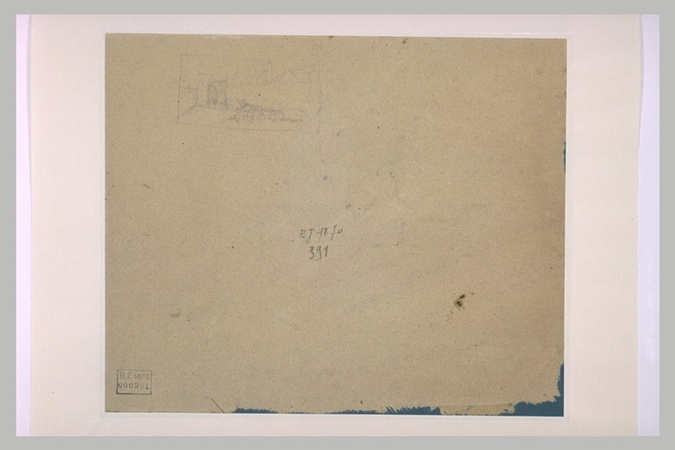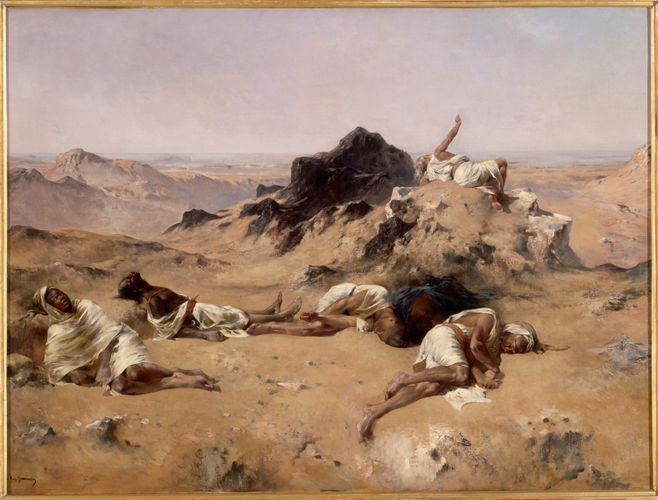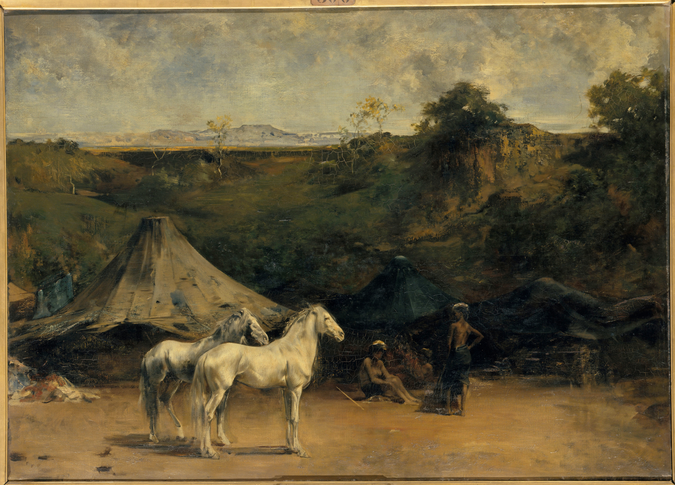Vue du Nil
Whereas at the beginning of the 19th century, many painters were content to represent an imaginary Orient, Eugène Fromentin produced a more authentic view having travelled extensively in Algeria and Egypt.
For this peaceful View of the Nile the painter uses a solid composition. The sky occupies two thirds of the picture, with the line of the horizon separating this from the waters of the river. On the right, a building on the riverbank abruptly cuts off the view. Plunged into shadow, it symbolises man's attempts at construction in the face of the natural elements.
The rigidity of these lines is counterbalanced by the oblique lines of the yardarms on the feluccas, introducing a picturesque element. There is noticeable use of grey and a drabness in this painting in contrast with Fromentin's earlier paintings, where colour plays a major part.
Fromentin was not only interested in the Orient as a painter, but also as a writer. In 1857 and 1858, he published Un été dans le Sahara, followed by Une année dans le Sahel.

